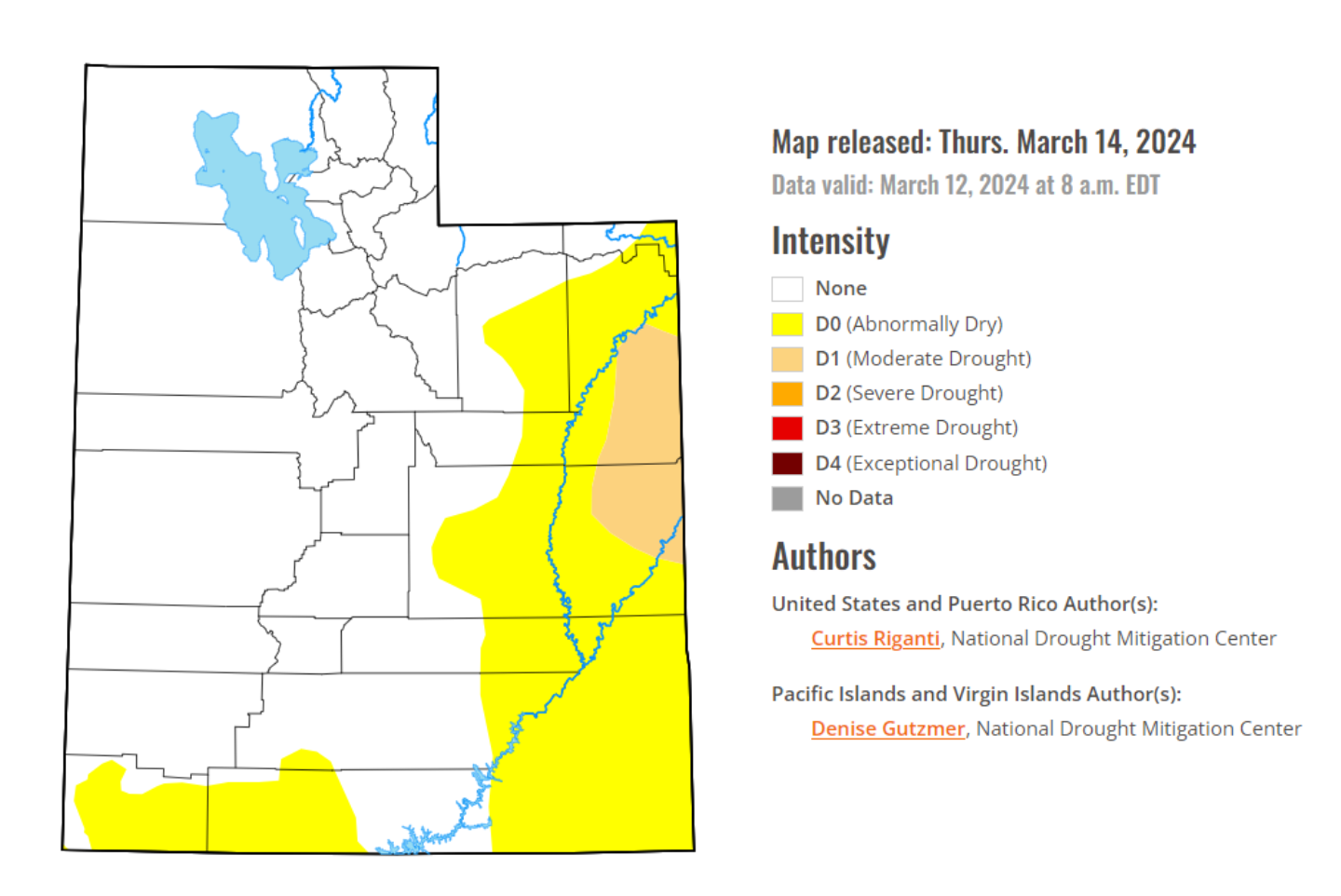Utah’s 2024 water outlook is “encouraging” and “notable,” according to the Utah Division of Water Resources.
Utah’s snowpack was above average in February and remains above average in March.
“Our statewide snowpack has been consistently above normal since the beginning of February, which has really put Utah in a good position as we head into spring,” Candice Hasenyager, director of the Division of Water Resources, said in a statement.
Utah recorded above average precipitation, soil moisture and water inside the snowpack for February, according to the Natural Resources Conservation Service’s March 1 Utah Water Supply Outlook report.
The report said even if Utah doesn’t receive any more precipitation, Utah will still have above average water levels in the snowpack for the season.
“With the historic 2023 winter barely in our rearview mirror, it’s outstanding to see this winter come through with above normal conditions … The benefits of another good snowpack season are likely to be felt statewide,” the March 1 report said.
How is snowpack affecting drought?
The U.S. drought monitor shows Utah’s drought conditions are improving from last year.
As of March 12, 2024, 69.12% of Utah’s land isn’t experiencing any drought conditions, with only 30.88% of land experiencing abnormally dry conditions.

During the same week last year, only 7.27% of Utah’s land wasn’t experiencing any drought conditions. A total of 97.35% of Utah land was experiencing at least abnormally dry conditions, with 38.93% of Utah land experiencing severe drought.
How are Utah’s lakes?
The Great Salt Lake water levels rose 1.8 feet since October 2023 and reservoir water levels across the state are up 22% of the average for March, according to the Division of Water Resources.
As of March 12, Utah Lake holds 873,840 acre-feet of water. On the same day last year, Utah Lake held about half as much water, 498,402 acre-feet, according to Snoflo.
“Our reservoirs are our water savings account,” Hasenyager said. “This critical infrastructure provides us with the water security we have today. Continued studies and investments in water infrastructure will be needed for Utah’s future generations.”
Information about Utah water conservation efforts can be found on the Division of Water Resources website.




